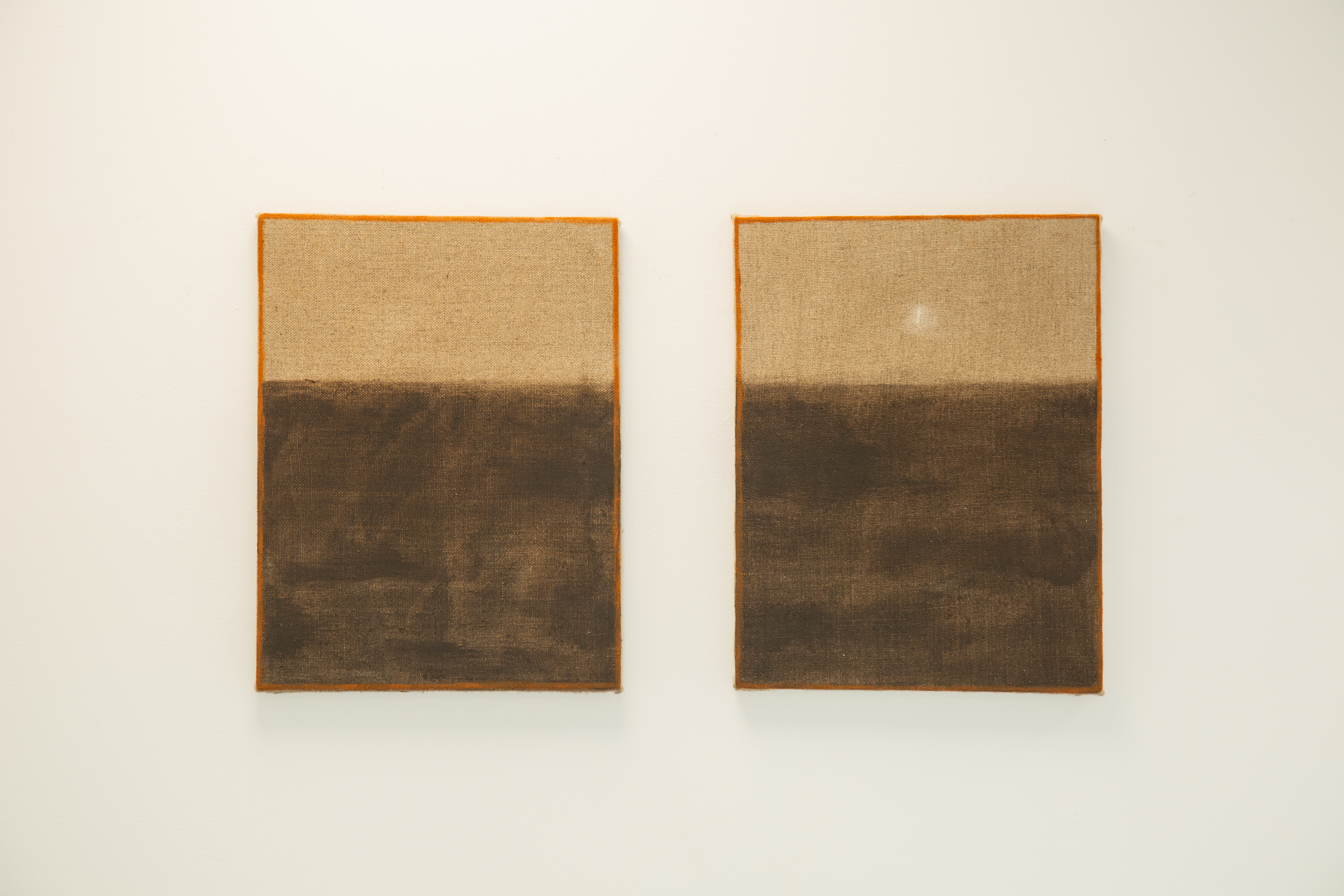Border[land]
whenua pigment oil paint (mud from Boggy Pond, Wairarapa Moana, harakeke seed oil) and oil paint (store bought) on linen, 2x 30x40cm


![Border[land] installed at Boggy Pond, Wairarapa Moana](https://freight.cargo.site/t/original/i/1fbca7ce8dcd0bb2b624533bf9488ec627265e71d0c71ee52851fc3d09731f79/0Y4A0774-2.jpg)
![Border[land] alongside traces left behind and imprints silently borne and Supertrophic, Massey University, 2023](https://freight.cargo.site/t/original/i/810a71bde3bd12f80a34b661cdee207eb2257db4e1f14d566d935176ceb59084/0Y4A6758-28.jpg)
![Border[land] installed at Boggy Pond, Wairarapa Moana](https://freight.cargo.site/t/original/i/49966389f5a921b8d28ae60a1e01c2a250101e19904fcd111da382d1740d9049/0Y4A0770.jpg)
![Border[land] in Brackish Waters Exhibition, Twentysix Gallery, Newtown, 2023. Photo credit: Chloe Mason](https://freight.cargo.site/t/original/i/86c9293783f449be3ae75a101690136711007f019e9b9729bf426864cac5ae51/0Y4A0457.jpg)

This work was made in collaboration with Boggy Pond, Wairarapa Moana wetlands, with the intention of giving agency to the repo (wetland) in my making. Through repeatedly visiting the wetland, I slowly began to build a relationship with place. My conceptual and practical processes have been collaborative, representing a rejection of the Western separation of culture and nature, and emphasizing the importance of human and non-human cooperation in ecological regeneration and conservation.
Border[land] uses whenua (earth) pigment mixed with harakeke (New Zealand Flax) seed oil to create a rich shade of brown to depict the mud of the wetland symbolically and representationally. This work references Western constructions of “landscape” and “wilderness” as being defined by borders that serve to separate humans from the “purity” of wild spaces. This is reflected in the use of store-bought orange oil paint that borders the whenua pigment oil paint.
The title speaks to Kim Ward’s article, “For Wilderness or Wildness? Decolonising Rewilding” (2019) and Geoff Park’s essay “A Moment for Landscape” from Theatre Country (2006). They both discuss the construct of “wilderness” as lacking nuanced “middle-landscapes” and “borderlands” where both nonhumans and humans can coexist. Border[land] is also literal in the placement of brackets around “land”, and in the painted orange borders around the edges of the canvasses. These borders represent ones that humans have drawn to define what is “wild nature”, the survey lines that have been drawn in the rural landscapes of Aotearoa to dissect it according to colonial understandings of property, and the lines that have been drawn to create the culture/nature dualism.
Border[land] uses whenua (earth) pigment mixed with harakeke (New Zealand Flax) seed oil to create a rich shade of brown to depict the mud of the wetland symbolically and representationally. This work references Western constructions of “landscape” and “wilderness” as being defined by borders that serve to separate humans from the “purity” of wild spaces. This is reflected in the use of store-bought orange oil paint that borders the whenua pigment oil paint.
The title speaks to Kim Ward’s article, “For Wilderness or Wildness? Decolonising Rewilding” (2019) and Geoff Park’s essay “A Moment for Landscape” from Theatre Country (2006). They both discuss the construct of “wilderness” as lacking nuanced “middle-landscapes” and “borderlands” where both nonhumans and humans can coexist. Border[land] is also literal in the placement of brackets around “land”, and in the painted orange borders around the edges of the canvasses. These borders represent ones that humans have drawn to define what is “wild nature”, the survey lines that have been drawn in the rural landscapes of Aotearoa to dissect it according to colonial understandings of property, and the lines that have been drawn to create the culture/nature dualism.